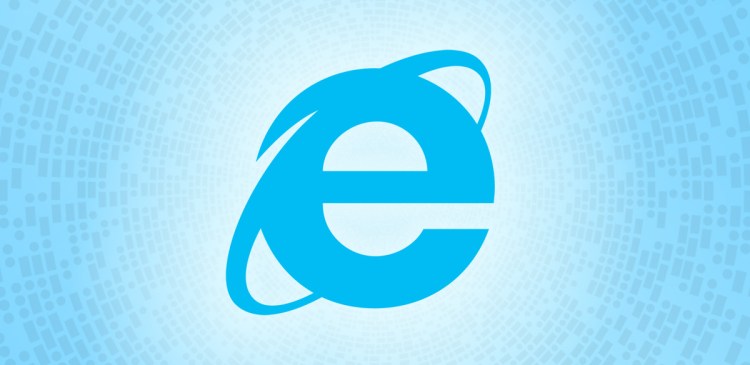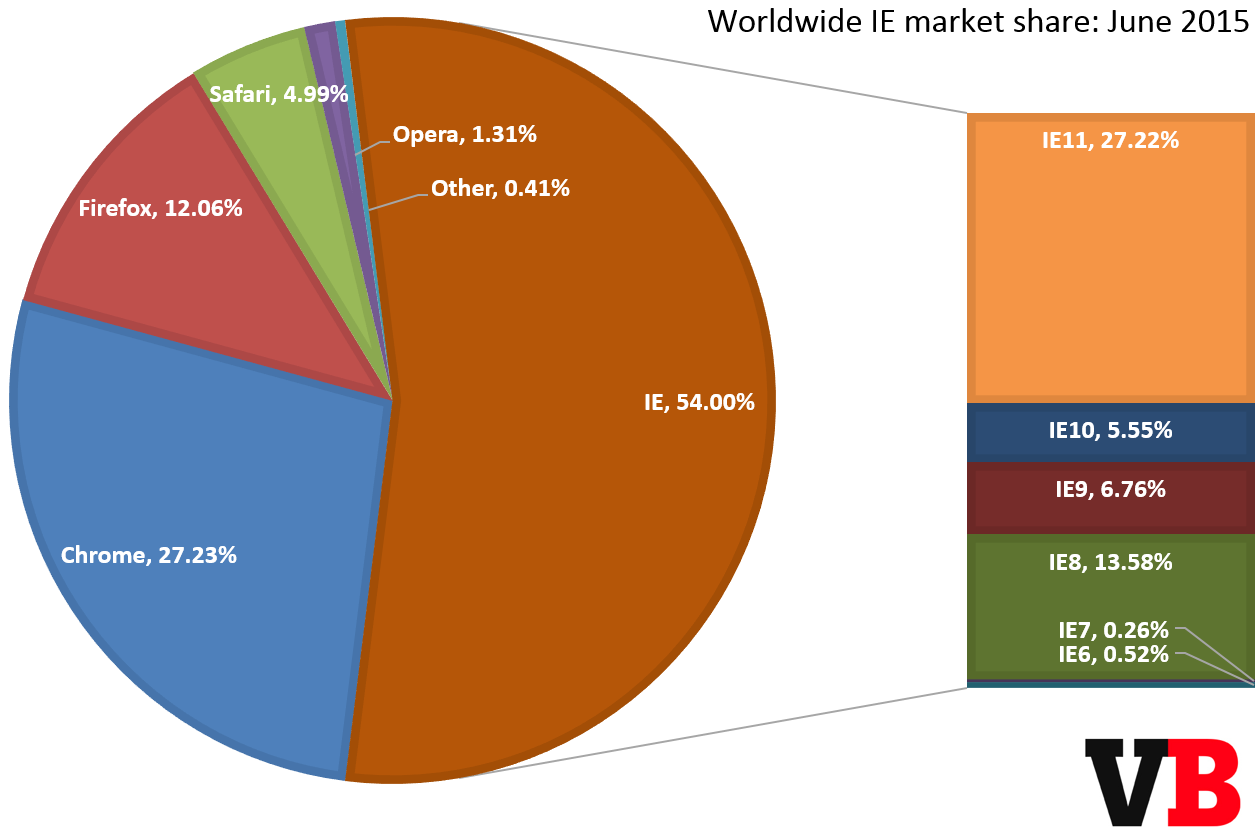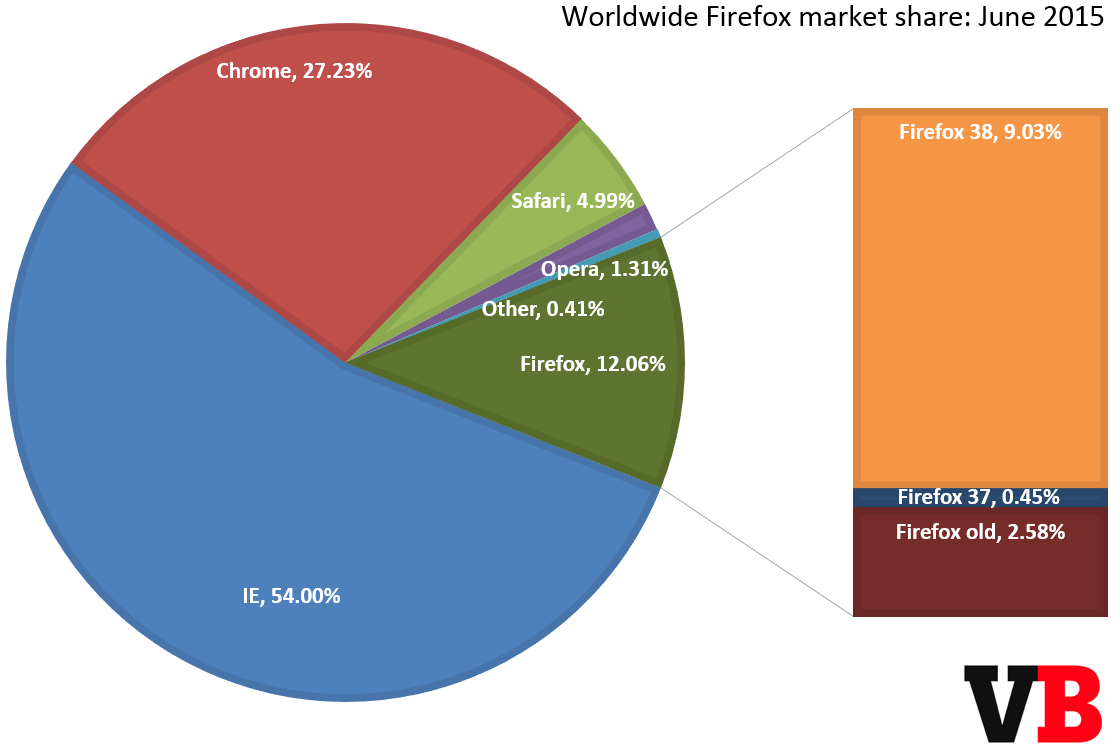In June 2015, we saw Microsoft Edge branding finally show up in Windows 10, as well as the first full month of Chrome 43 and Firefox 38 availability. Now we’re learning that Microsoft’s current browser, Internet Explorer, has finally fallen below the 55 percent market share mark.
The news is a stark reminder that for many months to come, we’ll be watching Edge slowly but surely steal share from IE. It will take years before IE becomes completely irrelevant on the Web.
See also: Windows 7 passes 60% market share ahead of Windows 10’s debut
Between May and June, here is how the browser market changed, according to the latest figures from Net Applications:
- Internet Explorer: down 1.15 points to 54.00 percent
- Chrome: up 0.86 points to 27.23 percent
- Firefox: down 0.18 points to 12.06 percent
- Safari: up 0.06 points to 4.99
- Opera: up 0.08 points to 1.31 percent
Breaking the IE figure down further shows good news for Microsoft’s browser: The latest version, IE11, grew 1.14 percentage points to 27.22 percent. IE10 gained 0.30 points to 5.55 percent, IE9 slipped 0.77 points to 6.76 percent, and IE8 fell a solid 1.21 points to 13.58 percent.
In October, IE11 managed to pass IE8 to become the world’s most popular browser, and the gap continues to widen. This new trend became possible when Windows XP, whose users can’t upgrade past IE8, started to lose significant share. As a result, IE11 can grow unchallenged, until, of course, Edge arrives later this month.
Among the really old versions, IE7 slipped 0.12 points to 0.26 percent and IE6 fell 0.33 points to 0.52 percent.
Google’s Chrome passed the 25 percent mark in April. Chrome’s gains ensure more than one in four Web users still use the browser.
Chrome 43 captured 17.55 percent, Chrome 41 fell to 1.02 percent, and Chrome 40 slipped to 0.61 points. Older versions will continue to plummet as the latest version takes over, as is typical with Google’s numbers.
As we’ve noted before, Mozilla’s Firefox has been hitting new lows for months. In June, it was up 0.18 points to 12.06 percent, though that’s still less than 1 percent above its latest low of 11.6 percent in February.
Thankfully, Firefox’s built-in upgrade system continues to work well. Firefox 38 grabbed 9.03 percent, while Firefox 37 dropped to 0.45 percent and Firefox 36 fell to 0.18 percent.
Net Applications uses data captured from 160 million unique visitors each month by monitoring some 40,000 websites for its clients. This means it measures user market share.
If you prefer usage market share, you’ll want to get your data from StatCounter, which looks at 15 billion page views. The operating system figures for June are available here.





